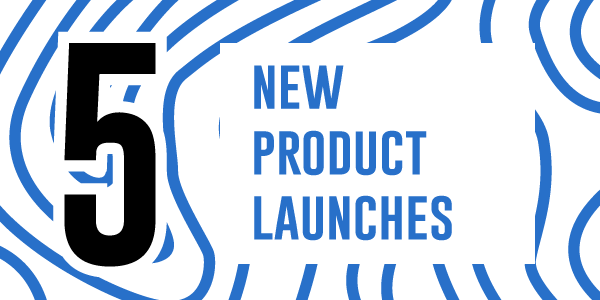This is the fifth article in the Lilypad Beer Sales Best Practices Series and Ebook curated from conversations with industry pros. The first five chapters have been released on the Lilypad blog and the next five chapters were released in an Ebook in April 2020.
Fifty years ago, purchase decisions were largely based on two things: tradition or access. Either people purchased products based on familial affinity or they bought things that were regionally available. Either way, advertisements were simple and new brands took months, even years to break onto the scene. After the birth of the internet, and perhaps more importantly, social media, we in the 21st century have become comfortably privileged with immediate access to information – and accustomed to a constant influx of new products. As a result, producers are forced to accommodate our goldfish-like attention span with new things that draw both on our desire for new, but our reverence for tradition.

In the craft beer industry, the need to launch new products is inevitable. The trick is, balancing releases of new products with the continued success of your core brands. The consumers, and your competition, will leave you behind if you fail to create new beers that excite drinkers and capture our short attention spans. Many of these products will never prove to be staples in your brewery, but releasing them is the first step in seeing what works. It’s essential to keep that in mind when allocating production, marketing, and sales resources toward product launches and considering how these new products will support your core business.
“One of the biggest challenges is making sure that new innovation, new SKUs and all that, don’t become just the shiny objects that take away from the core or the strong brands that are already there.”
Chris Russell, Vice President of Sales, CANarchy
In Chris’ case, the CANarchy Collective is constantly innovating on entirely new products as well as new SKUs to repurpose existing brands. In any given grocery you might find Oskar Blues’ Wild Basin Seltzer next to a CANarchy IPA mixed pack. Because the collective is comprised of so many breweries with very strong core brands, CANarchy has needed to find opportunities to piggyback off the success of their strongest performing brands by pairing them in the package, or in the store, with brands they want to grow. Every brewery, even the little guys, have an opportunity to take a similar approach in the market.

Example of a CANarchy display taken from the Lilypad Social Wall
During our panel, Allagash Brewing’s Sales Director, Naomi Neville, gave her own example by discussing the launch of Allagash White in cans. The massive movement to cans, which continues to be a growth area for the beer industry, is a textbook example of how suppliers like Allagash can look at consumer trends and produce products that support those behaviors. While our tendencies to jump from product to product are accelerating, there is still an opportunity for a core brand to gain loyalty if it adapts to support a particular lifestyle or preference. When you’re planning new product launches, look not only at entirely new liquid, but for ways to bring your core brand into different venues to generate loyalty with your existing audience or break through to an entirely new one.
From here, the resounding consensus is that once you figure out what is being created, you need to solidify your game plan for production and distribution. All of our panelists emphasized that one of their biggest struggles with new product launches is inventory management.
“One of the things that I think is a huge challenge, and I’m not sure I have the right answer to this by any means, is inventory control. We have so many sets of eyes trying to get that initial forecast correct.”
Jason Ingram, National Sales Director, Left Hand Brewing
To Jason’s point, a huge part of ensuring you’re not wasting production resources or creating headaches for your distributors or retailers during a launch is getting your best possible estimate of the load in and rate of sale, upfront. We’ll go into more details on using data in chain sales and product launches in our e-book, but for now, our panelists’ brief advice is to take advantage of the technology available to you to look at similar stores, products, and SKUs when forecasting for initial launch. But the initial launch is only a portion of the process.
“A major part of [the sales team’s] job right now is inventory management and on a daily basis talking to their wholesalers.”
Naomi Neville, Sales Director, Allagash Brewing Company
As we discussed in blog 4, your distributors are a great ally for market domination. In the instance of new product launches, keeping share of mind with your distributor helps you key into ongoing inventory details so you can better manage production. When you work closely with your distributors, you can ask valuable questions like “What’s in the warehouse currently?” or “What is going on the next truck and when does it go out for delivery?”

In Allagash’s example, Naomi explains that they put a huge emphasis on freshness. For Allagash White cans, distribution started only in the states they could ship to in one day. Maintaining that commitment to freshness takes serious alignment with your distributor.
“We’re making sure that the beer is where it needs to be, but nobody has too much beer. We want to try and bring freshness through necessity.”
Naomi Neville, Sales Director, Allagash Brewing Company
The finishing touch to any new product launch is implementing a sales strategy that supports success. Think about where a product can take your brand or how it can open new opportunities, then set your sales team out with targets that yield the biggest returns. Is your new SKU going to open up new venues for your sales team, like golf courses or rooftop bars? Is it something that will relate really well to a certain geography or region? Is it a seasonal that’s going to peak for seasonal events, like Oktoberfest? Your sales team should attack opportunities that make sense based on the personality of the specific product.
Prioritizing your sales efforts can seem like a daunting task, but all our panelists agree that using technology like Lilypad makes it not just possible, but practical. Through Lilypad, your team can create target lists and goals that align with your new product strategy. You should send your team after those targets, then as a management team you need to pair gap reporting with your sales execution tools to steer your team after launch and drive new product success home. By customizing your execution strategy with real, tangible data, you are giving yourself a fighting chance. From there, it’s all about ongoing reporting to deem your newest launch a success or a failure (more on that in the e-book).

There are so many variables for success that new launches are bound to be a bit of trial and error, but, you’re not the only one going through these challenges! The evolution of introducing new products is a never-ending process, but thankfully, so is the development of technology like Lilypad. The good news is that success can be found if you attack it the right way. When we looked back at Allagash Brewing’s can launch last February, we found that they sold more than 9,000 barrels of canned offerings in 2019 and pushed the brewery’s volume across the 100,000-barrel threshold.
Actionable takeaways:
- Balance new innovation with your existing portfolio. Use your core brands and new products in tandem to support adoption.
- Prioritize initial forecasting, then emphasize communication to keep share of mind with your distributors in order to monitor inventory that drives efficient production.
- Use data to focus your team’s strategy where your product will be most successful using tools like Lilypad.
- Don’t be afraid to evolve your execution strategy if the sales data is telling you a new story.
- Product launches and inventory management pose some of the toughest challenges in the industry. Take advantage of every resource you can to maximize your chance of success and embrace the trial and error process that helps you improve your next launch


